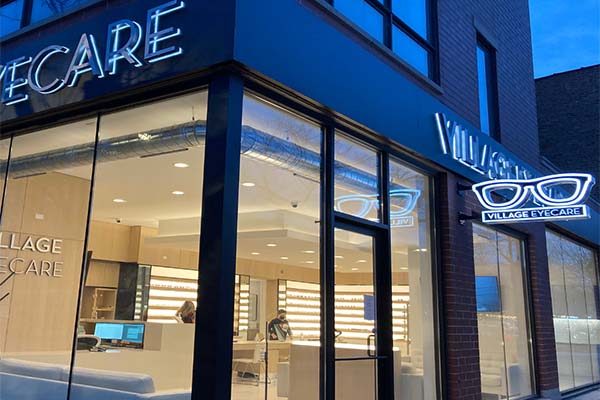Discover the Best Eye Center Andalusia: Advanced Vision Solutions
Wiki Article
Comprehending the Different Vision Correction Procedures Available for Clearer View
In the world of vision adjustment treatments, a wide variety of choices exist to address refractive mistakes and supply individuals with more clear view. From the extensively acknowledged LASIK surgical procedure to much less invasive treatments like PRK and implantable lenses, the area of ophthalmology uses a series of strategies customized to suit various demands and choices. Each treatment includes its own collection of factors to consider, benefits, and possible dangers. Understanding the subtleties of these vision modification methods is essential for making educated decisions about one's aesthetic health and wellness. Allow's check out the complexities of these treatments and clarified the path to attaining enhanced vision quality.LASIK Surgical Procedure
LASIK surgical treatment is a typical refractive procedure made use of to correct vision issues such as farsightedness, astigmatism, and nearsightedness. This surgical method, which stands for Laser-Assisted sitting Keratomileusis, aims to reshape the cornea to improve just how light is concentrated on the retina, ultimately improving vision clearness. Throughout the treatment, a thin flap is created on the cornea, and a laser is used to eliminate accurate amounts of tissue to reshape it properly. This reshaping enables for light to be precisely focused onto the retina, remedying refractive mistakes.One of the primary advantages of LASIK surgical procedure is the fast enhancement in vision experienced by clients. Many individuals discover a considerable enhancement in their vision promptly after the treatment. Furthermore, a lot of clients report marginal discomfort and pain during the surgical treatment and healing duration. The recovery time for LASIK is relatively fast, with several people returning to their everyday activities within a day or 2 post-operation. Overall, LASIK surgical treatment is a prominent option for individuals seeking a lasting option for their vision issues.
PRK Procedure

PRK is an ideal choice for individuals with slim corneas or those at a higher risk of eye injuries, as it does not entail creating a corneal flap. The recuperation process for PRK is somewhat longer contrasted to LASIK, as the epithelium needs time to regrow. Clients may experience discomfort and blurred vision for a few days adhering to the treatment.
Despite the longer recuperation time, PRK can yield exceptional outcomes in vision enhancement, making it an important choice for those who might not appropriate candidates for LASIK surgical procedure. - Andalusia Pediatrics
Implantable Lenses
As opposed to PRK where the cornea is reshaped straight, implantable lenses site link offer another approach for dealing with vision by inserting man-made lenses inside the eye. This treatment is specifically useful for people with high levels of astigmatism, farsightedness, or nearsightedness who might not appropriate prospects for laser surgical treatments like LASIK or PRK.Implantable lenses, also referred to as phakic intraocular lenses, job by supplementing the eye's natural lens with a synthetic one. These lenses can be placed before the all-natural lens (anterior chamber) or behind the iris and in front of the all-natural lens (posterior chamber) By adjusting the power and positioning of these lenses, eye doctors can successfully like it remedy refractive errors and enhance visual skill.
One advantage of implantable lenses is that they are exchangeable and detachable, providing versatility for future adjustments. As with any kind of medical procedure, there are risks involved, such as infection or cataract development. Individuals considering implantable lenses need to talk to an eye treatment expert to establish the most appropriate alternative based on their specific requirements and eye health.
Corneal Rings

The procedure for placing corneal rings is minimally invasive and reasonably fast, typically executed as an outpatient procedure. Throughout the surgery, the ophthalmologist makes a little laceration in the cornea and inserts the rings at a details deepness. When in area, the rings help to reshape the cornea, offering a smoother surface area for light to get in the eye, which can lead to more clear vision.
Corneal rings are taken into consideration a relatively easy to fix treatment, as they can be eliminated or replaced if essential. While they might not completely get rid of the requirement for glasses or call lenses, go to this web-site corneal rings can considerably boost vision quality and general visual comfort for people with keratoconus or other corneal irregularities.
Refractive Lens Exchange
Complying with the adjustment of corneal irregularities with procedures like corneal rings, one more vision improvement technique that can deal with refractive mistakes is Refractive Lens Exchange (RLE) RLE is a surgery that entails changing the eye's natural lens with a fabricated intraocular lens (IOL) to remedy refractive errors such as nearsightedness, presbyopia, and farsightedness. This procedure is particularly helpful for people that may not be ideal prospects for procedures like LASIK or PRK because of elements such as slim corneas or high refractive errors.Recuperation time for RLE is relatively quick, and clients can expect better vision quickly after the treatment. As with any type of medical treatment, prospective threats and difficulties exist, so an extensive examination with an eye treatment expert is necessary to determine if RLE is the best vision improvement choice.
Conclusion

In the world of vision modification treatments, a plethora of choices exist to attend to refractive mistakes and provide individuals with more clear sight.LASIK surgical procedure is an usual refractive treatment made use of to fix vision problems such as farsightedness, nearsightedness, and astigmatism.While also a common refractive treatment, the PRK (Photorefractive Keratectomy) method differs from LASIK surgical procedure in its technique to correcting vision troubles.Complying with the correction of corneal abnormalities with procedures like corneal rings, an additional vision modification method that can deal with refractive mistakes is Refractive Lens Exchange (RLE) LASIK surgical treatment, PRK procedure, implantable lenses, corneal rings, and refractive lens exchange are all choices that can deal with various vision issues.
Report this wiki page